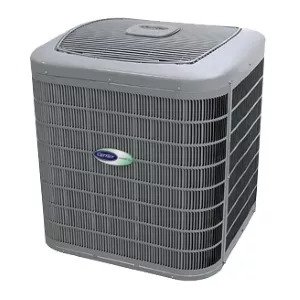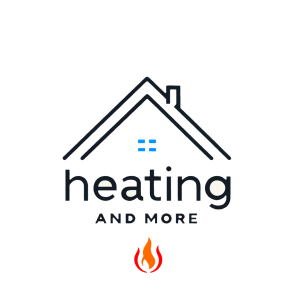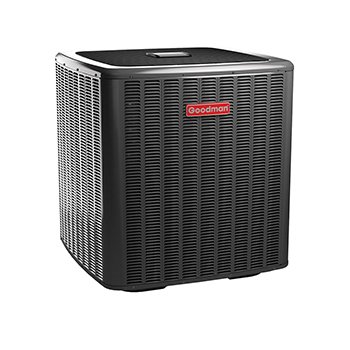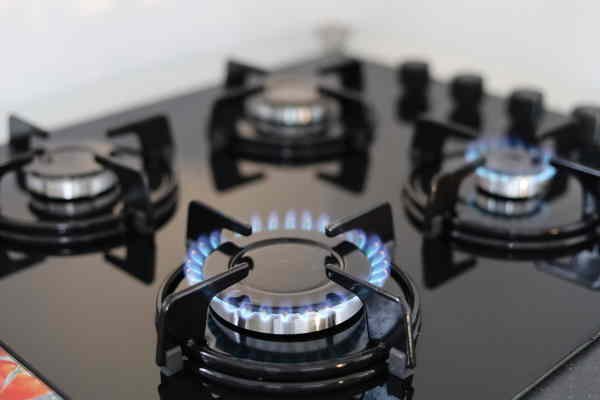How to Improve Performance of Your Heat Pump Easily
Improving the performance of your heat pump is essential for maximizing its efficiency, reducing energy costs, and ensuring consistent home comfort.
Whether you are dealing with an older unit or looking to optimize a newer model, there are several strategies you can implement to enhance your heat pump’s functionality.
From regular maintenance and proper installation to smart upgrades and home efficiency improvements, these steps will help you get the most out of your heat pump, keeping your home warm in the winter and cool in the summer with minimal energy waste.

9 Tips to Improve the Performance and Efficiency
The reasons for lower heat pump efficiency can vary widely, from incorrect unit sizing and poor installation to insufficient airflow, improper refrigerant levels, and suboptimal unit location. Even failing components can play a significant role.
To prevent these issues and ensure your heat pump operates efficiently and maintains your comfort, consider the following recommendations:
Improve Home Efficiency
Improving your home’s efficiency significantly reduces the load on your heat pump and cuts energy costs. Start by ensuring your home is well-insulated, focusing on the attic, walls, and around windows and doors. Aim for insulation with a high R-value, such as R-30 for ceilings and R-11 for exterior walls, or higher.
Seal any gaps and air leaks with weatherstripping and caulk, and consider installing energy-efficient doors and windows with double or triple glazing and low-E coatings. A moisture barrier in damp areas can also protect your insulation and maintain its effectiveness.
Additionally, optimize your home layout by reducing the size of your heat pump and shortening duct lengths, which enhances efficiency and reduces costs. Ceiling fans can help distribute warm or cool air evenly, further easing the load on your heat pump. In winter, run fans clockwise to push warm air down, and in summer, run them counterclockwise to create a cooling breeze. These measures will make your home more comfortable, energy-efficient, and cost-effective to heat and cool.
By making your home more energy efficient, you can opt for a smaller unit and shorter ducts.
Find the Best Location to Reduce Energy Loss
To minimize energy loss and enhance efficiency, install your heat pump on the north side of your house or in a shaded area to protect it from direct sunlight. Ensure the unit is clear of obstructions like trees and shrubs to maintain good airflow and prevent it from working harder than necessary.
Adequate ventilation is crucial, so avoid placing the heat pump in confined spaces or near walls that impede airflow. Elevate the unit if you live in an area prone to heavy snowfall or flooding to prevent damage, and position it to minimize exposure to strong winds.
Additionally, protect the heat pump from debris by choosing a location where it’s less likely to be clogged by leaves, dirt, or other contaminants. Regularly clean and inspect the area around the unit to maintain optimal performance. By carefully selecting the best location for your heat pump, you can ensure it operates efficiently, providing consistent comfort and energy savings for your home.
Proper Professional Installation is Important
Even if you have the best, high-efficiency model, poor installation and service can lead to poor performance, premature failure, and expensive repairs. Proper installation begins with accurately determining the heating and cooling loads to ensure the system is correctly sized for your home. This involves calculating the necessary airflow and duct size to prevent obstructions and ensure efficient operation.
Leak-proof seals and proper hookups according to codes and manufacturer recommendations are also essential. These steps ensure that the system runs safely and efficiently from the start.
Additionally, regular professional maintenance is crucial to keep the system performing as expected and to extend its lifespan. This includes routine inspections, cleaning, and adjustments to maintain optimal efficiency and prevent costly breakdowns.
Ensure Sufficient and Proper Refrigerant Charge
It’s crucial to ensure that your heat pump has the proper refrigerant charge, and this task should always be performed by a professional. The process involves many complexities, including the use of specialized tools, handling high refrigerant pressures, and mitigating potential risks.
Charging a heat pump is similar to charging an air conditioner during the summer and cooling mode, but it becomes more complex in lower temperatures. Various methods are employed to achieve the correct charge, such as the weight method, discharge temperature method, and others.
Each method requires precise execution to ensure the system operates efficiently and safely. Therefore, always rely on a qualified technician to handle refrigerant charging and maintain your heat pump’s optimal performance.
Schedule Professional Maintenance
Regular maintenance is essential to keep your heat pump running efficiently and effectively.
Start by checking and replacing filters every 1-3 months, depending on usage and air quality; dirty filters can reduce airflow, increase energy costs by 5-15%, and shorten the system’s lifespan. Choose the right size filter and consider good quality filters for better air quality.
At least once a year, have a qualified technician perform a comprehensive inspection and tune-up.
This should include checking refrigerant levels, inspecting electrical connections, and ensuring all components are in good working order.
Additionally, clean the coils on both the evaporator and condenser to remove debris, snow, and ice, maintain proper clearance around the unit, and clear any obstructions in the drain openings.
Inspect fans regularly to ensure they are functioning correctly. Proper maintenance not only improves performance but also prolongs the lifespan of your heat pump and reduces energy costs.
Clean or Replace Filters
Dirty filters can make your heat pump work a lot harder than it needs to, which wastes energy, raises your bills, and shortens the system’s life. Check your filters every month and plan to replace them every 1-3 months, though this depends on how much you use your system and the air quality in your home.
Make sure you’re using the right filter size—common ones are 16x20x1, 20x20x1, and 20x25x1 inches. If you want better air quality, consider HEPA filters; they capture 99.97% of particles that are 0.3 microns or larger. Filters with a MERV rating between 8 and 13 strike a good balance between filtration and airflow. Keeping your filters clean not only saves energy and lowers costs but also helps your heat pump last longer.
Prevent Duct Leakage to Reduce Heat Waste
It would be ideal if there is no air duct leakage, but in reality this is significant. According to some studies it says that an average 20% goes on energy waste in ducts, and it depends on the location of the ducts.
Try to keep the air leakage between 5 and 10 percent of the heat pump system airflow. The material of the ducts must be according to the best practice and manufacturer recommendation, secured and sealed using the proper compounds. Avoid duct materials and building cavities used as ducts as it produces a lot of leakage. Once the duct system is in place, or you are suspicious about the existing one, arrange the testing to make sure everything works properly.
According to the experts, between 400 and 500 cubic feet per minute of airflow should be provided for each ton of the heat pump AC capacity. If it is less than that, the performance is decreasing so as the comfort. The solution is to make the ducts bigger or if possible, increase the speed of the fans.
Every room should have one of more registers for the air intake and supply, so the correct air circulation is provided. There should be no blockage. If for any reason some rooms do not have registers, a connection between the rooms should be provided by installing the louvered grilles on doors or windows. The capacity of the heat pump is in direct correlation with the airflow.
Setting Up the Thermostat
Choose a 7-day programmable thermostat and let it control the indoor climate for the maximum efficiency. It allows you to program several different temperatures on a daily basis either for cooling in summer or heating in winter, or maintain set temperature when away for vacation.
The recommended indoor temperatures are around 68 F for heating, 78 F for cooling and lower/higher when on vacation, but this is relative. Turn the fan to AUTO mode, or switched to ON, which increases the energy consumption, but at least the temperature distribution inside the house is even, no hot or cold pockets. This is what helps removing the moisture from the house out. Otherwise there would be more stress on the compressor.
Keep in mind that your heat pump unit is a sophisticate electric device which, in order to avoid the warranty issues, should be maintained and serviced by a professional and licensed technician.
Upgrade Components
Upgrading components in your heating and cooling system can greatly enhance its efficiency and performance. One effective upgrade is to install a zoning system, which divides your home into different areas, each with its own thermostat.
This setup allows you to heat or cool only the areas in use, significantly improving overall efficiency and comfort. By avoiding unnecessary heating or cooling of unoccupied spaces, a zoning system can reduce energy consumption and lower utility bills.
Additionally, individual temperature control in each zone enhances comfort by catering to the specific needs of different areas in your home.
Another important upgrade to consider is replacing your heat pump if it is more than 10-15 years old. Newer models are significantly more efficient and come with advanced features that can further enhance performance.
Modern heat pumps offer better energy efficiency, improved reliability, and advanced technologies such as variable speed compressors and smart thermostats. Upgrading to a newer model can result in substantial energy savings, improved home comfort, and a reduced environmental footprint.
Investing in these upgrades ensures that your home remains comfortable and energy-efficient for years to come.
More About Heat Pumps

Heat Pump Not Cooling? Here’s What You Need to Know
Heat pumps are essential not only in the winter for heating our homes but also in the summer to cool…

Compare Ductless Mini-Split Heat Pumps vs. Window Heat Pumps: Which Is Right for You?
In this article, we are going to look at ductless mini-split heat pumps vs. window heat pumps, examine how each…

Explore the Differences: How Ductless vs. Ducted Heat Pumps Compare
Deciding between ductless vs. ducted heat pumps is as easy as planning a holiday. You know it’s going to cost…



